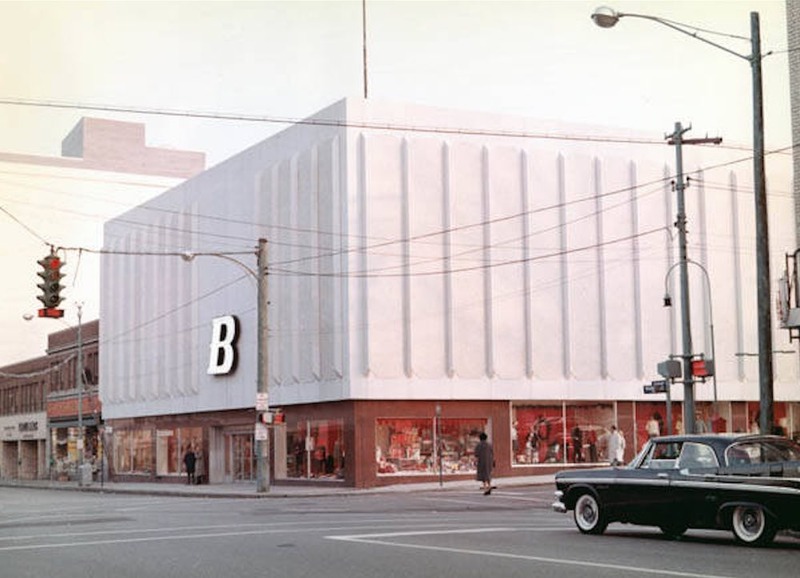
The sweet smell of retail success was in the air in the early 1870s due to the example set by William Taylor and Thomas Kilpatrick. Their success prompted Lewis A. Bailey, Colonel Louis Black, and Charles K. Sunshine to combine their financial resources and open a store of their own. In 1881 these men opened the L.A. Bailey Dry Goods Company, which was located at the corner of Ontario Street and Prospect Avenue. L.A. Bailey’s Dry Goods proved to be very successful and grew throughout the years. By 1895 the building had five floors and many departments including the Grocery Department.
Bailey’s Dry Goods went through a major change after Lewis Bailey’s death in 1899. Colonel Louis Black and Charles Sunshine bought the company and combined it with the Cleveland Dry Goods Co. The Bailey Co. was now a real department store. The department store became even more successful than the dry goods store was. As business continued to grow so did the store. The store expanded and new buildings were added. By 1910, Bailey’s included a ten-story building. Bailey’s opened their first branch store in 1929 at 10007 Euclid Avenue. The success of this branch led to branches being opened in Lakewood (1930), at East 228th Street and Lake Shore Boulevard (1951), and in the Eastgate Shopping Center in Mayfield Heights (1959).
Bailey’s success was due to many things. First, Cleveland was a city that provided an ideal setting for store growth. Many people were moving into Cleveland at the time of the Bailey Co.’s opening. The Bailey Co. turned into a department store at a time when Cleveland was the seventh city in population and the ninth city in manufacturing. It made an important decision to market itself as a store friendly to working-class Clevelanders with low prices, installment plans, and frequent sales promotions. It even branded itself "The Store For All the People." Another, later, factor in Bailey’s success was its branch stores. Suburban stores were good because they were located where the people were living. This was convenient because it did not force the people to commute downtown.
In 1958 Century Food Market Company (CFM) bought Bailey’s and hoped to turn it into one of Cleveland’s largest department store chains. In 1961 Taylor’s Department Store (which was the store that influenced the original Bailey’s) became the first downtown department store to close. Bailey’s followed in Taylor’s footsteps and a few months later the downtown Bailey’s store closed. Demolition began and in 1964 a parking garage called the Parkade opened where Bailey’s once stood.
This was not the end of Bailey’s…yet. The people of Cleveland were outraged and still wanted to shop downtown. The public forced Bailey’s to reconsider, so Bailey’s decided to open a store back up downtown. On November 1, 1962 Bailey’s opened the first two floors of its new eleven-story store which was located at 514 Prospect Avenue and formerly belonged to the Bing Furniture Co.
Bailey’s began to struggle financially so they decided to merge with Miracle Mart in 1963. Miracle Mart was very optimistic and projected high profits. In 1968 three former Bailey’s stores, the Lake Shore Boulevard store in Euclid, the Eastgate Shopping Center store in Mayfield Heights, and the downtown store on Prospect Avenue, opened as Bailey’s Wonder Marts. Cleveland department stores began to close in the 1960s due to growing competition, profit losses, changing ownership, and increasing debt. A new generation of customers had emerged in the 1960s who wanted excitement and flair, not a traditional store like Bailey’s. These shoppers were sophisticated and wanted upscale department stores and specialty shops that were especially located in the suburbs. They were willing to pay for these stores. The Bailey’s Wonder Marts did not impress these new customers and was faced with growing competition to discount stores like K-Mart that appealed to these customers. Bailey’s ended up declaring bankruptcy in 1968. All of the Bailey’s stores closed and the Bailey’s era was over.
Images







